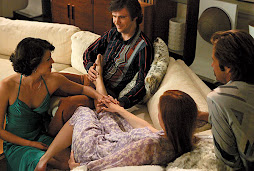First time swingers by Maxine Payne
In this article by Maxine Clark she talks about first time swingers going to their first swinger party. The number one question asked is who is a swinger and who is involved in swinger parties. Maxine says that swinging is not cheating, it’s consensual which means no secrets and both partners are very aware of what takes place. If you are sneaking off and having a casual fling on the side then you are a cheater not a swinger. In the article it says that men will often be the first to initiate a swinging experience and are often surprised at how readily their partners will consent to the idea. A lot of time can pass between discussion and action and many couples may never progress past this point even after an agreement. She says that first time swingers should never feel pressured into sex, there should be 100 % agreement between all parties and at least some chemistry to make the experience as exciting as possible. If a partner gets cold feet or a bad vibe then it is to respect your partner and stop no matter how badly you might want to proceed. Couples need to keep the communication lines open at all times, it’s very important to have some clear boundaries. Swinging can be fun, take the time to find the right partners and test the waters. This is what this is said in the article



